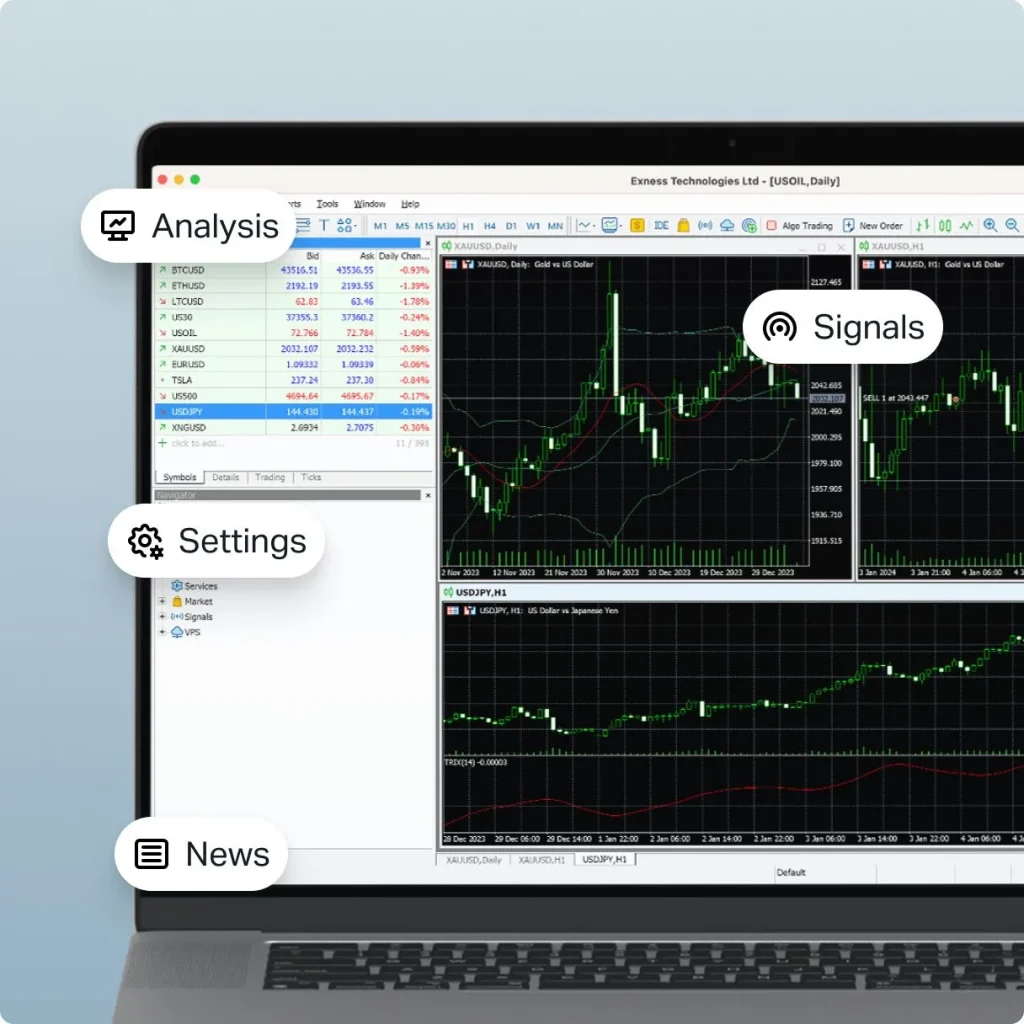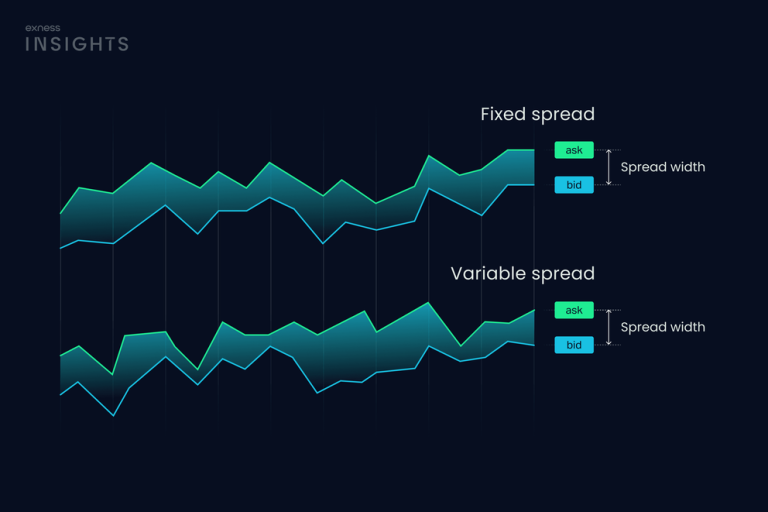Exness Spreads for Indian Traders: Understanding Trading Costs
Home » Exness Spread
Spreads represent the difference between bid and ask prices for trading instruments. We offer competitive spreads starting from 0.0 pips on major currency pairs. Indian traders can choose account types based on spread preferences and trading styles.
Spread costs directly impact trading profitability. Lower spreads reduce transaction costs and improve profit margins. Different account types offer varying spread structures to match your trading approach.
Spread Types and Structures
We offer fixed and variable spread options across different account types. Variable spreads fluctuate with market conditions while fixed spreads remain constant. Each structure serves different trading strategies and preferences.
Variable Spread Characteristics
Variable spreads change based on market liquidity and volatility. Spreads tighten during high liquidity periods and widen during low liquidity. Most professional accounts use variable spread pricing.
Time Period | EUR/USD Spread | GBP/USD Spread | USD/JPY Spread |
London Session | 0.1-0.3 pips | 0.2-0.5 pips | 0.1-0.4 pips |
New York Session | 0.1-0.4 pips | 0.3-0.7 pips | 0.2-0.5 pips |
Asian Session | 0.3-0.8 pips | 0.5-1.2 pips | 0.1-0.3 pips |
Weekend/Holiday | 2.0-10 pips | 3.0-15 pips | 1.5-8 pips |
Variable spread factors:
- Market liquidity levels
- Economic news releases
- Trading session overlaps
- Major event announcements
- Interbank rate fluctuations
Variable spreads provide better pricing during optimal trading hours. Expect wider spreads during news events and low liquidity periods.
Fixed Spread Benefits
Fixed spreads remain constant regardless of market conditions. Easier to calculate trading costs and plan strategies. Some account types offer fixed spread options for predictable trading costs.
Account Type | EUR/USD Fixed | GBP/USD Fixed | USD/JPY Fixed |
Standard Cent | 0.3 pips | 0.5 pips | 0.3 pips |
Standard | 0.1 pips | 0.3 pips | 0.1 pips |
Fixed spread advantages:
- Predictable trading costs
- Simplified profit calculations
- No spread surprises during volatility
- Better for automated trading systems
Fixed spreads may be slightly higher than variable spreads during optimal conditions. Consider your trading style when choosing spread structures.
Spreads by Account Type
Different account types offer distinct spread structures and pricing models. Professional accounts typically provide tighter spreads with commission-based pricing. Standard accounts offer commission-free trading with slightly wider spreads.
Standard Account Spreads
Standard accounts provide competitive spreads without commission charges. Suitable for most trading strategies and experience levels. Spread-only pricing simplifies cost calculations.
Currency Pair | Standard Spread | Standard Cent Spread |
EUR/USD | From 0.1 pips | From 0.3 pips |
GBP/USD | From 0.3 pips | From 0.5 pips |
USD/JPY | From 0.1 pips | From 0.3 pips |
AUD/USD | From 0.4 pips | From 0.6 pips |
USD/CHF | From 0.3 pips | From 0.5 pips |
Standard account spread features:
- No commission charges
- Competitive major pair spreads
- Wider spreads on exotic pairs
- Consistent pricing structure
- Suitable for swing trading
Standard accounts work well for position trading and swing strategies. Lower frequency trading benefits from commission-free structures.
Professional Account Spreads
Professional accounts offer institutional-level spreads with commission charges. Raw Spread and Zero accounts provide direct market access pricing. Total costs often lower for active traders.
Account Type | EUR/USD | Commission | Total Cost |
Pro | 0.1 pips | None | 0.1 pips |
Raw Spread | 0.0 pips | $3.5/lot | ~0.35 pips |
Zero | 0.0 pips | Variable | ~0.4 pips |
Professional account benefits:
- Institutional spread levels
- Direct market access
- Better execution speeds
- Lower total costs for active trading
Commission-based accounts suit high-frequency trading strategies. Calculate total costs including commissions for accurate comparisons.
Major Currency Pair Spreads
Major currency pairs offer the tightest spreads due to high liquidity. These pairs represent the most traded currencies globally. Indian traders often focus on major pairs for better execution conditions.
EUR/USD Spread Analysis
EUR/USD provides the tightest spreads among all currency pairs. Highest liquidity ensures consistent pricing and execution. Popular choice for scalping and day trading strategies.
Time | Standard Account | Pro Account | Raw Spread |
08:00-12:00 GMT | 0.1 pips | 0.1 pips | 0.0 pips |
12:00-16:00 GMT | 0.1 pips | 0.1 pips | 0.0 pips |
16:00-20:00 GMT | 0.2 pips | 0.1 pips | 0.0 pips |
20:00-24:00 GMT | 0.3 pips | 0.2 pips | 0.1 pips |
EUR/USD trading advantages:
- Lowest spread costs
- High liquidity
- Minimal slippage
- Consistent execution
EUR/USD offers optimal conditions for most trading strategies. Low spreads make scalping viable.
GBP/USD and USD/JPY Spreads
GBP/USD and USD/JPY provide competitive spreads with good liquidity. Slightly wider than EUR/USD but still suitable for active trading.
Pair | Average Spread | Peak Hours | Off-Hours |
GBP/USD | 0.3-0.7 pips | 0.3 pips | 1.2 pips |
USD/JPY | 0.1-0.5 pips | 0.1 pips | 0.8 pips |
GBP/USD characteristics:
- Higher volatility than EUR/USD
- Wider spreads during London close
- Good liquidity during European hours
- News sensitivity affects spreads
USD/JPY characteristics:
- Tight spreads during Asian session
- Lower volatility than GBP/USD
- Consistent institutional trading
- Popular for carry trades

Minor and Exotic Pair Spreads
Minor and exotic currency pairs typically have wider spreads due to lower liquidity. These pairs include cross-currencies and emerging market currencies.
Cross-Currency Pair Spreads
Cross-currency pairs exclude USD as base or quote currency. Generally wider spreads than major pairs but offer diversification benefits.
Cross Pair | Standard Spread | Trading Session Impact |
EUR/GBP | 0.8-2.0 pips | European hours preferred |
EUR/CHF | 1.2-3.0 pips | Swiss market hours |
GBP/JPY | 1.5-4.0 pips | London-Tokyo overlap |
AUD/JPY | 1.0-3.5 pips | Asian session optimal |
Cross-pair considerations:
- Wider spreads increase trading costs
- Lower liquidity affects execution
- Currency correlation risks
- Suitable for position trading
Cross-pairs work better for longer-term strategies. Higher spreads make scalping less profitable.
Exotic Currency Spreads
Exotic pairs include emerging market currencies like Indian Rupee. Significantly wider spreads reflect lower liquidity and higher volatility.
Exotic Pair | Typical Spread | Volatility Level |
USD/INR | 5-25 pips | Medium |
EUR/TRY | 15-50 pips | High |
USD/ZAR | 10-40 pips | High |
GBP/TRY | 20-80 pips | Very High |
Exotic pair characteristics:
- Wide spreads increase costs
- High volatility creates opportunities
- Limited trading hours
- Political risk factors
Exotic pairs suit position trading strategies. Wide spreads make day trading challenging.
Spread Behavior During Market Events
Spreads widen significantly during major economic announcements and market events. News releases, central bank decisions, and geopolitical events affect spread behavior.
Economic News Impact
High-impact economic releases cause temporary spread widening. Non-farm payrolls, central bank meetings, and GDP releases create volatility.
Event Type | Spread Impact | Duration | Recovery Time |
NFP Release | 2-5x normal | 15-30 minutes | 1-2 hours |
FOMC Meeting | 3-10x normal | 30-60 minutes | 2-4 hours |
GDP Release | 1.5-3x normal | 10-20 minutes | 30-60 minutes |
CPI Data | 2-4x normal | 15-30 minutes | 1-2 hours |
News trading considerations:
- Pre-event spread widening
- Potential order rejections
- Increased slippage risks
- Liquidity provider withdrawal
Some traders avoid news events due to unpredictable spreads. Others specialize in news trading strategies.
Market Session Transitions
Spread behavior changes during trading session transitions. Overlapping sessions provide better liquidity and tighter spreads.
Session | Active Hours (GMT) | Optimal Pairs | Spread Behavior |
Asian | 23:00-08:00 | USD/JPY, AUD/USD | Moderate spreads |
London | 07:00-16:00 | EUR/USD, GBP/USD | Tight spreads |
New York | 12:00-21:00 | USD/CAD, USD/MXN | Variable spreads |
Overlap | 12:00-16:00 | Major pairs | Tightest spreads |
Plan active trading during optimal session times. Session transitions may create temporary spread widening.
Spread Optimization Strategies
Minimize spread costs through strategic trading approaches. Choose appropriate account types based on trading frequency. Time entries during favorable spread conditions.
Account Selection for Spread Optimization
Different trading styles benefit from specific account types. High-frequency traders prefer commission-based accounts with zero spreads.
Trading Style | Recommended Account | Reasoning |
Scalping | Zero/Raw Spread | Lowest total costs |
Day Trading | Pro/Raw Spread | Balance of cost and features |
Swing Trading | Standard/Pro | Commission-free beneficial |
Position Trading | Standard | Spreads less critical |
Trading frequency guidelines:
- 1-5 trades per month: Standard accounts
- 5-20 trades per month: Pro accounts
- 20+ trades per month: Raw Spread/Zero accounts
- Scalping strategies: Zero accounts mandatory
Calculate total monthly costs including commissions. Account selection significantly impacts profitability.
Timing Strategies for Better Spreads
Trade during optimal market hours for tighter spreads. Avoid low liquidity periods and major news events.
Optimal trading times:
- Major pairs: European and US session overlap
- Asian pairs: Asian market hours
- Cross-pairs: Relevant session overlaps
- Avoid: Weekend gaps, holiday periods
Develop trading schedules based on spread behavior patterns. Consistency in timing improves overall trading costs.
Spread Monitoring Tools
Track spread behavior using platform tools and external resources. Real-time spread monitoring helps optimize entry timing.
Tool Type | Features | Availability | Cost |
Platform Widgets | Real-time spreads | All platforms | Free |
Spread History | Historical data | MT4/MT5 | Free |
Mobile Alerts | Spread notifications | Mobile apps | Free |
Monitoring best practices:
- Check spreads before trade execution
- Monitor during news events
- Track patterns across different sessions
- Compare spreads between instruments
Regular spread monitoring improves trading decisions. Develop awareness of normal spread ranges for your preferred instruments.
Frequently Asked Questions
What are the lowest spreads available for Indian traders?
We offer spreads from 0.0 pips on major currency pairs through Zero and Raw Spread accounts. Standard accounts provide spreads from 0.1 pips on EUR/USD.
Do spreads widen during economic news releases?
Yes, spreads typically widen 2-10 times normal levels during high-impact news events. Spreads usually return to normal within 1-2 hours after the announcement.
Which account type offers the tightest spreads?
Zero accounts provide 0-pip spreads on 30+ major instruments, though commissions apply. Raw Spread accounts offer institutional spreads from 0.0 pips with commission charges.
How do weekend spreads compare to weekday spreads?
Weekend spreads are significantly wider due to low liquidity, often 5-20 times normal weekday levels. Avoid holding positions over weekends when possible.
Can I see real-time spreads before trading?
es, all trading platforms display current spreads in real-time. Market watch windows show bid-ask prices and calculated spreads for all instruments continuously.


